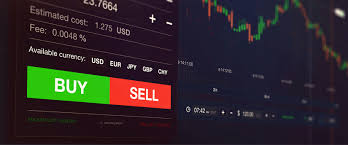Understanding Forex Trading An In-Depth Definition and Guide

Understanding Forex Trading: An In-Depth Definition and Guide
Forex trading, short for foreign exchange trading, is the act of buying and selling currencies on the global market. This market is one of the largest and most liquid in the world, with a daily trading volume exceeding 6 trillion dollars. To navigate this vast landscape effectively, traders need to understand the fundamental concepts, tools, and strategies involved. In this guide, we will delve deep into the definition of forex trading, discuss its key components, and highlight helpful resources, including the forex trading definition Best Platforms for Trading.
What is Forex Trading?
Forex trading involves the simultaneous buying of one currency and selling of another. Currencies are traded in pairs, with one currency being quoted against another. The first currency in the pair is known as the base currency, and the second is the quote currency. For example, in the currency pair EUR/USD, the euro (EUR) is the base currency, and the US dollar (USD) is the quote currency.
How Does Forex Trading Work?
The forex market operates on a decentralized basis, meaning that all transactions occur over-the-counter (OTC) rather than on a centralized exchange. This market is open 24 hours a day, five days a week, allowing traders from all over the globe to participate at their convenience. Major trading centers include London, New York, Sydney, and Tokyo, each contributing to the market’s liquidity and volatility.
Traders can access the forex market through brokers or financial institutions that provide trading platforms. Upon choosing a broker, traders can use various strategies and analysis techniques to make educated decisions about their trades. The aim is to profit from fluctuations in currency values; however, it requires a sound understanding of market trends, economic indicators, and geopolitical events.
Key Terms in Forex Trading
Understanding some key terminology is crucial for anyone looking to engage in forex trading. Here are a few essential terms:
- Pips: The smallest price move in a currency pair, usually the fourth decimal place (0.0001).
- Leverage: A tool that allows traders to control larger positions with a smaller amount of capital, increasing both potential returns and risk.
- Spread: The difference between the buying price (ask) and the selling price (bid) of a currency pair.
- Lot: A standard unit of measurement for trading in the forex market. A standard lot is typically 100,000 units of the base currency.
- Margin: The amount of money required in a trader’s account to open a leveraged position.
Types of Forex Trading
There are various approaches to forex trading, each with its own strategy and goals:
- Day Trading: Involves opening and closing positions within the same trading day to capitalize on short-term price movements.
- Swing Trading: Focuses on holding positions for several days to take advantage of market swings.
- Scalping: A high-frequency trading strategy that aims to make small profits from minor price changes, typically by executing numerous trades within a short period.
- Position Trading: A long-term strategy where traders hold positions for weeks or months based on fundamental analysis.

Understanding Forex Analysis
Successful forex trading requires effective analysis to predict currency trends. There are two primary types of analysis:
Technical Analysis
This method involves analyzing price charts and applying various indicators to forecast future price movements. Traders often use tools such as moving averages, trend lines, and oscillators (like the RSI) to make informed decisions.
Fundamental Analysis
Involves analyzing economic indicators, news releases, and geopolitical events that can influence currency values. Traders focus on metrics like interest rates, GDP, employment data, and inflation, to evaluate the strength of currencies and make trading decisions.
Risks Involved in Forex Trading
Forex trading can offer significant profit potential, but it also carries substantial risks. One of the most critical risks is market volatility, which can lead to sudden changes in currency prices. Other risks include:
- Leverage Risk: While leverage can amplify profits, it can also magnify losses, leading to quick depletion of trading capital.
- Counterparty Risk: The potential that a broker or trading platform may default on their obligations.
- Market Risk: The risk of losing money due to unfavorable price movements in the market.
Choosing the Right Forex Broker
Selecting a reputable broker is essential for successful forex trading. Factors to consider include regulatory compliance, trading fees, available trading platforms, customer support, and educational resources. Always conduct thorough research and read reviews before making a decision.
Conclusion
Forex trading can be a rewarding endeavor for those who invest the time to learn the intricacies of the market. Understanding the definition, key components, and strategies associated with forex trading is fundamental to success. From grasping essential terminology to analyzing market trends, each step in this journey is critical. As you embark on your trading path, remember the importance of practicing safe trading principles and seeking reputable platforms to assist you in your trading journey.


